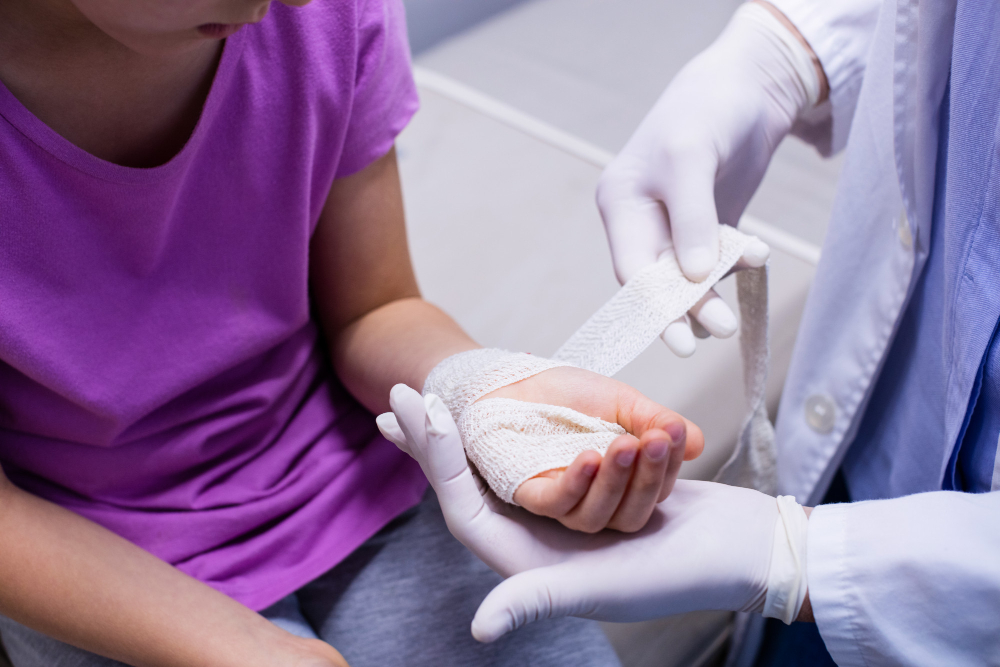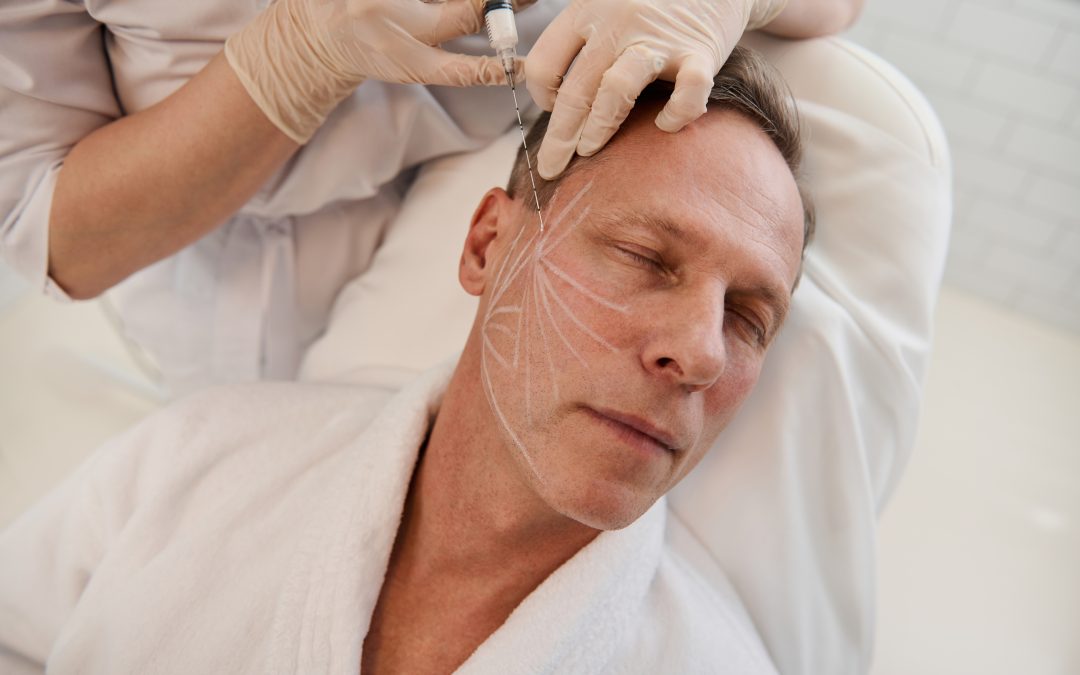Skin Healing
The skin is the body’s largest organ and its first line of defense. When it’s damaged—through cuts, burns, scrapes, or wounds—your body starts the healing process to regrow new skin.
The amount of time it takes for skin to grow back depends on the depth and size of the injury, your overall health, and the level of care the wound receives.
In a city like Naperville, where people lead active lives, understanding how long recovery may take helps avoid infections, scarring, or delayed healing. While minor surface injuries may heal in days, deeper skin damage can take weeks—or even months.
Minor Scrapes and Superficial Wounds
If the injury only affects the epidermis (the outermost layer of skin), healing is typically fast. In most cases, new skin starts forming within 2 to 3 days, and complete skin regrowth happens in about 7 to 10 days.
Good wound hygiene speeds up this process. Read How Long Does It Take for Scrapes to Transform from Wounds to Healed Skin

When do minor wounds heal fastest?
- When only the top skin layer (epidermis) is affected
- With proper cleaning and daily dressing changes
- In healthy individuals with no underlying conditions
What helps speed up healing?
- Applying a thin layer of ointment to keep the wound moist
- Avoid picking at scabs or scratching the area
- Protecting the wound from friction, sweat, or dirt
When to see a doctor?
- If redness spreads beyond the wound
- If swelling, pus, or pain increase after a few days
- If a dirty or rusty object caused the scrape
Moderate Cuts and Deeper Abrasions
When the dermis layer is affected, healing slows down. The body must form granulation tissue, grow new capillaries, and rebuild skin cells. It can take 10 to 21 days, and may involve mild scabbing or light scarring depending on the wound depth.
To avoid infection or excessive inflammation, refer to
What Are the Risks of Wound Stitches
Deep Wounds, Surgical Cuts, and Stitched Areas
Larger wounds, including surgical cuts or those closed with stitches, may take up to 4 to 6 weeks to fully grow back healthy skin. The skin may feel tight or itchy during this time as nerves reconnect and tissues settle.
For more insight, explore
How to Relieve Pain from Wound Stitches
and
How to Care for Wound Stitches
Keep the Wound Moist — Not Wet
Keeping a healing wound slightly moist helps speed up skin regrowth and reduces the chance of scarring. When a wound stays too dry, a complex scab forms, which slows down the movement of new skin cells.
However, soaking the wound or keeping it too wet can increase the risk of infection. The goal is balance—a moist, protected environment allows skin cells to grow across the wound more efficiently.
Apply a thin layer of petroleum jelly or antibiotic ointment and use sterile, non-stick bandages. Change the dressing daily or as soon as it becomes wet or dirty to keep the healing process on track.
Quick tips:
- Use petroleum jelly or approved healing ointments
- Avoid letting water soak into the wound
- Change dressings daily to control the moisture level
Signs of Overhealing or Infection
While most wounds follow a regular healing pattern, some may exhibit signs of overhealing or infection, which can delay skin regrowth.
Overhealing often appears as raised, bumpy tissue (called hypergranulation), while infection may cause spreading redness, pus, warmth, or increasing pain. If the wound starts to worsen after initial improvement, it’s time to seek medical care.
Recognizing these signs early helps prevent further complications and supports proper skin recovery.
What to look for:
- Bumpy tissue growing above the wound
- Redness that spreads or thick yellow fluid
- Pain that worsens after initial improvement
Nutrition
What you eat plays a massive role in how fast your skin heals and how healthy it looks afterward. Nutrients such as protein, vitamin C, zinc, and healthy fats help repair skin tissue, build collagen, and combat inflammation.
Poor nutrition can delay healing, increase scarring, and leave your skin looking dull or uneven.
Adding foods like eggs, citrus fruits, leafy greens, nuts, and fish to your diet provides your body with the essential nutrients it needs to naturally regrow and refresh your skin—from the inside out. When your body is nourished, your skin doesn’t just heal—it glows.
Helpful nutrients:
- Protein: eggs, lean meat, yogurt
- Vitamin C: oranges, bell peppers, broccoli
- Zinc: nuts, seeds, whole grains
Sleep Helps Regenerate Skin
While you sleep, your body focuses on repair—and that includes your skin. During deep rest, blood flow to the skin increases, collagen production rises, and damaged cells begin to rebuild.
Without enough quality sleep, these natural healing processes slow down, resulting in delayed skin regeneration and a dull appearance. For faster recovery, aim for 7 to 9 hours of uninterrupted sleep each night.
Elevating the injured area while resting can also reduce swelling and improve circulation. Sleep gives your skin the time and support it needs to heal and renew.
Rest tips:
- Aim for 7–9 hours of uninterrupted sleep
- Elevate injured areas if possible
- Avoid alcohol or caffeine before bed
Smoking and Alcohol Delay Skin Growth
Both smoking and alcohol can slow down the skin’s natural healing process. Smoking reduces oxygen flow to the wound, making it harder for new skin cells to form.
Alcohol weakens the immune system and dehydrates the body, which delays tissue repair. If you want your skin to heal faster and healthier, it’s best to avoid smoking and limit alcohol during the recovery period.
Why it matters:
- Nicotine constricts blood vessels
- Alcohol dehydrates the body and skin
- Reduced oxygen delays cell regeneration
Factors That Affect Healing Speed
Several factors influence how quickly your skin heals, including age, overall health, wound size, and the quality of care you provide.
Conditions such as diabetes or poor circulation can delay healing, while proper nutrition, hydration, and clean wound care can accelerate it. Understanding these factors helps you take the necessary steps for a faster and smoother recovery.
- Your age and overall health
- Location of the wound (thin skin areas heal faster)
- Proper wound care routines
- Whether or not the wound becomes infected
If you’re unsure how to treat different types of injuries, check out
What Type of Medical Professional Should You Consult for Scrapes and Minor Injuries
How to Encourage Skin Regrowth?
To speed up healing, keep your wound clean, covered, and protected. Use sterile dressings and refrain from picking at scabs. Drink plenty of water, eat healthy food, and get enough rest.
In some cases, especially with deep or contaminated wounds, medical care is necessary to support healing and reduce complications. Or Naperville residents,
Same-day medical Attention is readily available at 1st ChoiceMed.
For More Information:
How to Relieve Pain from Wound Stitches
How Do Wound Stitches Dissolve
What Makes Same-Day Medical Attention Essential for Managing Health Outcomes
Must Visit For Your Health:
Your health demands some immediate care and treatment from you, and for this purpose, there is a trustworthy medical help: https://journals.lww.com/frontiersonline/FullText/2018/03000/Optimizing_Technology_and_Business_Intelligence.4.aspx
FAQs
How long does it take for skin to grow back?
Minor wounds may heal in 7 to 10 days. eeper ones may take 3 to 6 weeks, depending on care.
Does skin regrow differently for deeper wounds?
Yes, he deeper the damage, the more time your body needs to rebuild skin layers and blood vessels.
Should I keep the wound covered?
Yes, covering helps protect against infection and supports faster healing.
Why does my wound itch during healing?
Itching is a regular part of nerve regeneration and tissue repair—void scratching.
Can I shower while it heals?
Yes, but avoid soaking. Eep, the area is gently cleaned and dried after washing.
Is it normal to have a scar?
Some level of scarring is normal after deep injuries. Proper care reduces it.
When should I worry?
If pain, swelling, or redness increase after a few days—or if pus appears—seek medical help.

